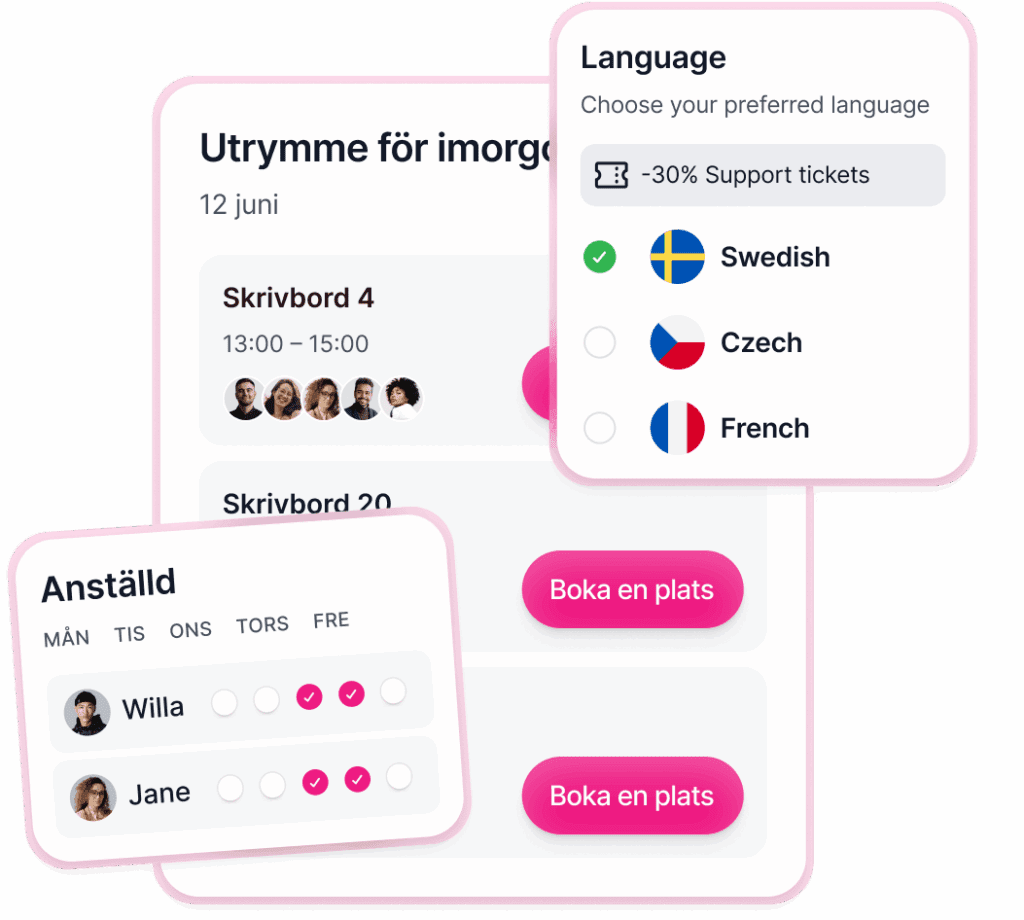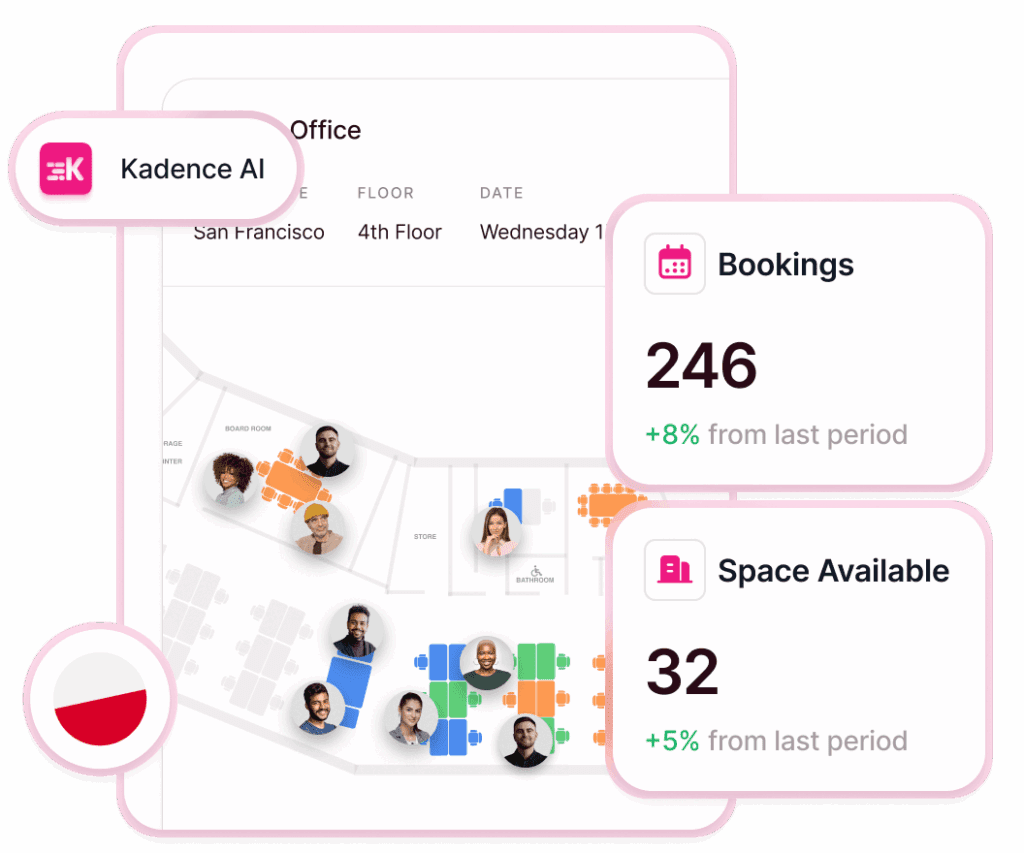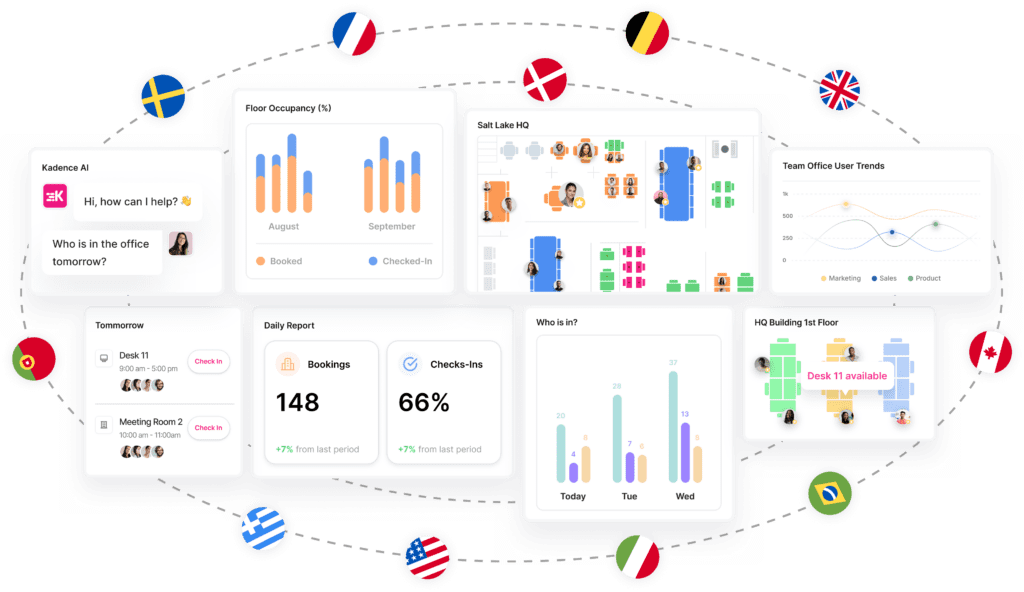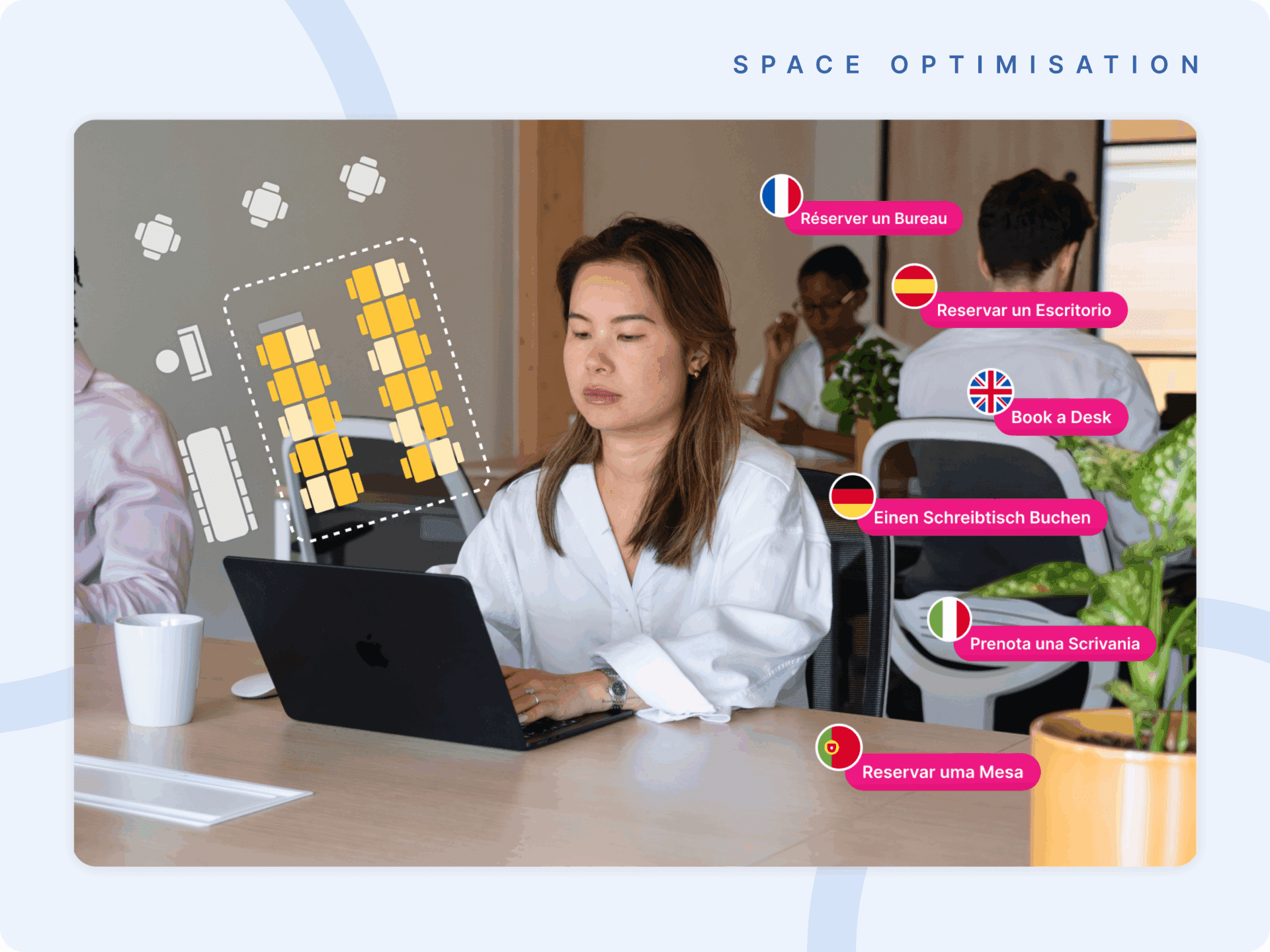I speak with workplace leaders every week who are rolling out new office strategies across five, ten, sometimes fifty countries. They tell me about the same pain points every time. Rollouts that take months because one region needs a translation update. Employees who lose confidence with tools because the interface feels unfamiliar. Data that becomes fragmented because teams revert to spreadsheets when the platform doesn’t speak their language.
What strikes me most in these conversations is how predictable the challenges have become. As soon as a company grows beyond a handful of offices, the same friction appears. Local teams start creating their own processes. Different regions choose different tools. IT ends up supporting multiple systems because nothing works quite the same everywhere. Suddenly a global rollout becomes a multi-year effort that costs far more than anyone expected.
None of this happens because the strategy is wrong. It happens because most workplace tools were designed for a world that was local. One office. One time zone. One dominant language. That is not how modern companies work.
The reality is that workplace infrastructure has to evolve. It has to be built for global operations from day one. And for many companies, that begins with supporting multilingual workplace operations that reflect how their teams actually work.

The Hidden Cost of Tools That Don’t Scale Globally
When a platform doesn’t support the language your teams use every day, adoption drops instantly. People hesitate to learn the system. They delay onboarding. They look for workarounds. And when enough people do that, data becomes inconsistent and the entire picture of how your workplace operates becomes unreliable.
I have seen companies lose months of progress because an entire region simply didn’t feel confident using the tools provided. Not because they didn’t believe in the strategy, but because the interface felt foreign. And when something as simple as booking a room or planning a week feels difficult, people naturally fall back on whatever is most comfortable.
These issues multiply quickly inside global organizations. Without multilingual workplace operations in place, leaders struggle to create alignment across teams. Processes diverge. Systems break. And the result is a workplace strategy that never reaches its full potential.

Why Language Has Become an Operational Requirement
Language used to be considered part of the user experience layer. Something nice to have once the core features were built. Today it is an operational requirement.
When people can use the workplace platform in their own language, onboarding is faster. Adoption is higher. Support tickets fall. Processes become consistent. And global teams begin to behave like one connected company rather than a collection of local offices.
Our customers see this shift clearly. When Kadence is delivered in a team’s native language, adoption accelerates almost immediately. Support tickets drop. Leaders get clearer data. The whole system starts to work the way it was designed. In other words, multilingual workplace operations become a catalyst for scale, not a barrier to it.
That is why multi-language support cannot sit on the sidelines anymore. It has to be foundational.

Building One Global Workplace Platform
This is the philosophy behind our work at Kadence. We built multi-language support natively into the platform, so every team can use Kadence in the way that feels natural to them. No separate versions. No staggered rollouts. No waiting for translations.
The platform now supports 38 languages, and everything updates in real time through our AI-driven translation workflow. That means every new feature launches globally at the same moment. Every notification, every page, every insight is immediately available in every supported language.
For IT, People, and Workplace teams, this removes one of the last major barriers to scaling operations. Instead of managing dozens of different configurations, everything runs on one consistent standard. It creates a single environment where multilingual workplace operations simply work in the background, supporting a unified experience everywhere.

What This Unlocks for Global Leaders
When you remove friction from the system, everything moves faster. Global policies can be rolled out with confidence. Data becomes reliable across regions. Workflows stay consistent. And teams feel included in the tools they rely on every day.
It is not just about building a better experience. It is about enabling global teams to work together with clarity and trust. And it is about giving leaders the confidence that their workplace strategy can scale across borders, cultures, and time zones with ease.
Multilingual workplace operations play a crucial role here. They strengthen alignment, reduce operational waste, and help companies maintain momentum even as they grow into new regions.
Workplace operations are evolving quickly. The companies that succeed will be the ones who invest in infrastructure that scales globally and feels personal locally. That combination is powerful. It is what turns a workplace strategy into a workplace advantage.

Work Without Borders
The future of work is not just distributed. It is global. And a global workplace needs tools that feel familiar everywhere.
Work should not feel harder because someone speaks a different language. If the workplace is where culture lives, then language is where inclusion starts. When people feel included, everything else becomes easier.
This is what we mean when we talk about Work Without Borders. Not a slogan. A belief that people everywhere should have access to the same experience, the same clarity, and the same confidence at work.
Kadence exists to make that possible.
If you want to see how multilingual workplace operations work at scale, book a demo with our workplace operations experts.





